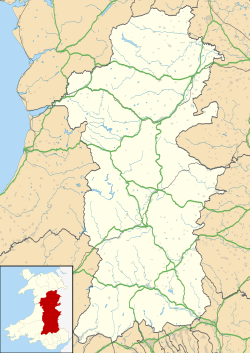| Painscastle | |
|---|---|
| Village and community | |
 Painscastle, aerial view | |
Location within Powys | |
| Principal area | |
| Country | Wales |
| Sovereign state | United Kingdom |
| Police | Dyfed-Powys |
| Fire | Mid and West Wales |
| Ambulance | Welsh |

Painscastle (Welsh : Castell-paen) is a village and community in Powys (formerly Radnorshire), Wales which takes its name from the castle at its heart. It lies between Builth and Hay-on-Wye, approximately 3 miles from the Wales-England border today. The community also includes the villages and settlements of Rhosgoch, Bryngwyn, Llandeilo Graban and Llanbedr. [1] The population as of the 2011 UK Census was 524. It is represented by the Painscastle and Rhosgoch Community Council, which comprises eight community councillors. [2] It is included in the Glasbury electoral ward for Powys County Council elections.
The southern boundary of the community runs through the Begwns, the larger part of which range of hills are within the community. The village itself sits in the broad valley of the Bachawy a small left-bank tributary of the River Wye which runs westwards to the south of it. To the north the community extends to include Red Hill, Llanbedr Hill and Bryngwyn Hill.


